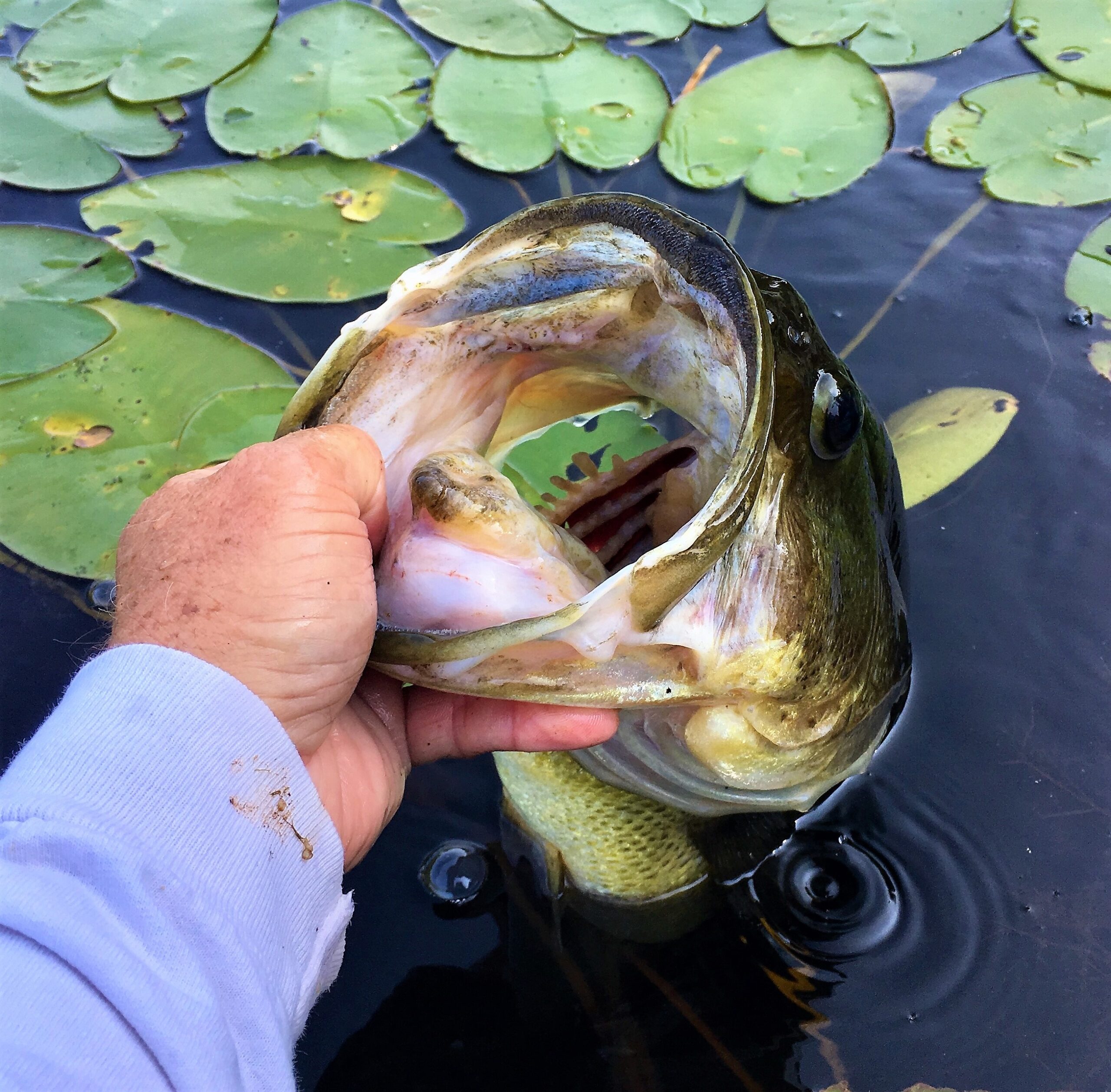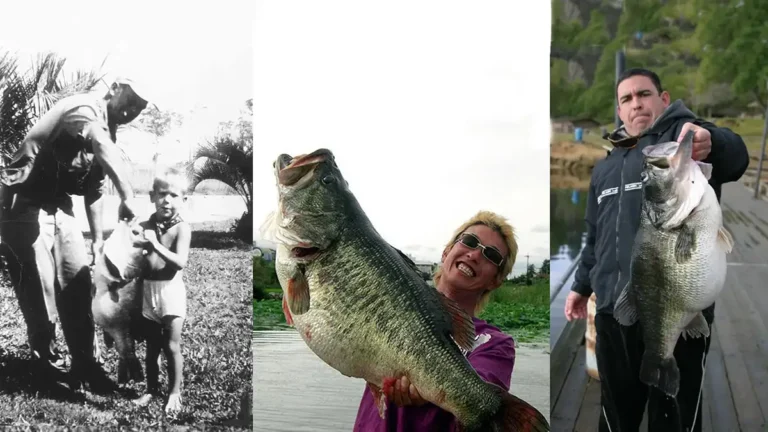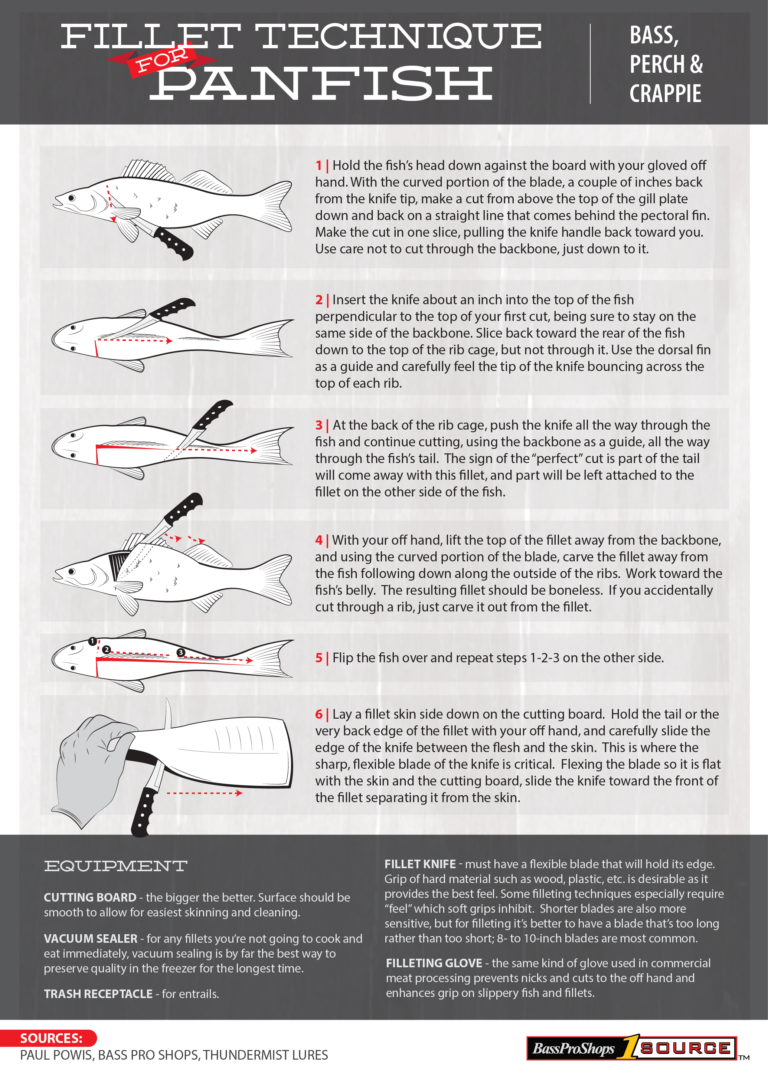How to Catch Big Bass in Ponds

Catch big bass in ponds by using live bait or large, slow-moving artificial lures. Target areas with structure, such as submerged logs or weed beds.
Catching big bass in small bodies of water like ponds can be incredibly rewarding. These environments often foster large, yet elusive, bass that provide anglers with a significant challenge. Understanding the habitat and behavior of bass is crucial to making that trophy catch.
Seasoned anglers know that patience, the right equipment, and an effective strategy are key components. This includes selecting the perfect time of day—dawn or dusk—when bass are most active, and water temperatures are suitable for these predatory fish. Employing techniques such as finesse fishing or flipping can also turn the odds in your favor. Stay tuned for insights on enhancing your bass fishing tactics and optimizing your chances for a successful catch.
Sizing Up Your Target: Big Bass Basics
Large bass thrive in various waters, including ponds. Understanding their physiology is key to successful catches. They possess a keen sense of hearing and can detect vibrations through their lateral lines. This ability helps them locate prey in murky waters. Their larger mouths allow them to target bigger prey, making them a prize for anglers.
Habitats for big bass include areas with ample cover like submerged logs, weed beds, and overhanging branches. They often prefer the pond’s deeper parts during hot weather. In colder months, they move to shallower waters to feed. Big bass exhibit sophisticated behaviors such as patrolling territory and ambushing prey. Spotting these predators requires patience and a keen eye for environmental clues.
Equipment Essentials For Trophy Bass
Selecting the Right Rod and Reel is crucial for catching big bass in ponds. Aim for a medium-heavy rod that provides enough backbone to handle a trophy fish yet allows for accurate casting. Pair it with a baitcasting reel for precision and power, or a spinning reel for ease and versatility.
For Line and Leader Choices, fluorocarbon lines are a favorite due to their near invisibility in water and great sensitivity to bites. Use a test strength between 12-20 pounds to ensure your line withstands the fight. Don’t forget a quality leader to reduce line visibility.
Your tackle box should include Must-Have Lures and Baits like swimbaits, spinnerbaits, and crankbaits, known for attracting big bass. Also stock soft plastics that mimic natural prey like worms, frogs, and crawfish. Real bait such as minnows or worms can also be effective.
Scouting And Understanding Ponds
To catch big bass in ponds, a good understanding of the water is key. Calm areas with less wind often hold bass, as these fish prefer tranquil waters. Look for parts of the pond where birds feed; this can signify an abundance of fish. Bass use underwater structures for cover, like logs, rock piles, and weed beds. During spring, bass tend to be in shallower areas to spawn.
As seasons change, so do the habits of bass. In warmer months, they are deeper to stay cool. But in the colder weather, they move shallow for warmth. Knowing the seasonal patterns helps in predicting bass location. Summer months may require deeper fishing techniques while in spring or fall, focusing on the shallows could yield better results.

Credit: agrilifetoday.tamu.edu
Techniques For Landing The Big One
Mastering the cast is vital for catching big bass in ponds. Cast close to structures such as lily pads, as bass often hide there. Use overhead casts to cover open water and sidearm casts for tighter spots. Proper casting increases chances of a good catch.
Effective retrieval strategies can be crucial. Alternate the speed of reeling in to imitate live prey movements. Sometimes, steady retrieves work best; other times, irregular movements lure the big ones. Pay attention and adapt your technique as needed.
To set the hook successfully, timing and force are key. Wait until you feel a strong pull, and then jerk the rod up firmly. This embeds the hook into the bass’s mouth. Don’t pull too hard, or you might snap the line. Remember, practice makes perfect.
Trophy Bass Tactics: Time Of Day And Weather Conditions
Trophy bass favor specific times for feeding, making dawn and dusk ideal for anglers. Low light conditions during these hours help big bass feel safe. It’s best to focus efforts then.
Weather patterns significantly impact bass behavior. For success, track changes in water temperature. Bass prefer warmer waters for feeding. A swift drop in temperature often leads to reduced activity.
Anglers should be agile, changing tactics with weather fluctuations. For example, slow down bait movement on colder days. Upsize your gear during stormy spells. Sharp observation combined with flexibility enhances your chances at landing big bass.

Credit: www.youtube.com
Catch And Release Best Practices
Handling bass with care is crucial for their survival after release. Always wet your hands before touching the fish. This protects their slime coat. Use a net with knotless mesh. Such nets are gentle on the bass.
Never hold the bass by the mouth vertically. Support the bass horizontally with both hands. Keep your grip firm but gentle. Do not squeeze the fish. Give the bass time to recover before release.
Release bass properly to ensure they grow bigger. Place the bass gently back in the water. Support the bass in the water until it swims away. Avoid throwing or dropping the bass back in. Proper release promotes future growth.

Credit: www.onthewater.com
Frequently Asked Questions On How To Catch Big Bass In Ponds
What Is The Best Bait For Pond Bass?
The best bait for pond bass typically includes live minnows, worms, and artificial lures such as crankbaits and spinnerbaits. Soft plastics shaped like frogs or lizards also yield success.
How Do I Find The Biggest Bass In My Pond?
To find the biggest bass in your pond, fish during dawn or dusk using large, slow-moving lures. Focus on areas with structure, like logs, weed beds, or drop-offs, where big bass often hide. Regularly restock smaller fish to maintain a food source for larger bass.
What Is The Best Bait For Big Bass?
The best bait for big bass often includes live bait such as shiners or crawfish. Artificial lures like swimbaits, jigs, and spinnerbaits also prove effective. Tailor your choice to the bass’s natural prey and local conditions.
What Is The Best Rig For Bass Fishing In A Pond?
The Texas Rig or Weedless Jighead are ideal for bass fishing in ponds, providing versatility and fewer snags.
Conclusion
Landing big bass in ponds doesn’t need to be daunting. Follow these techniques and go equipped with the right bait and gear. Patience and practice are your allies. So grab your tackle box, embrace the challenge, and enjoy the thrill of reeling in those pond giants.
Happy fishing!





